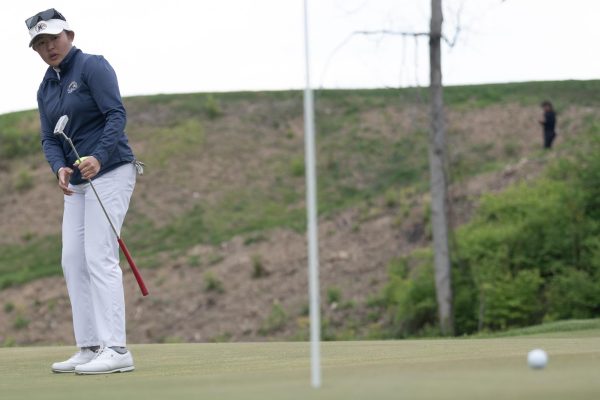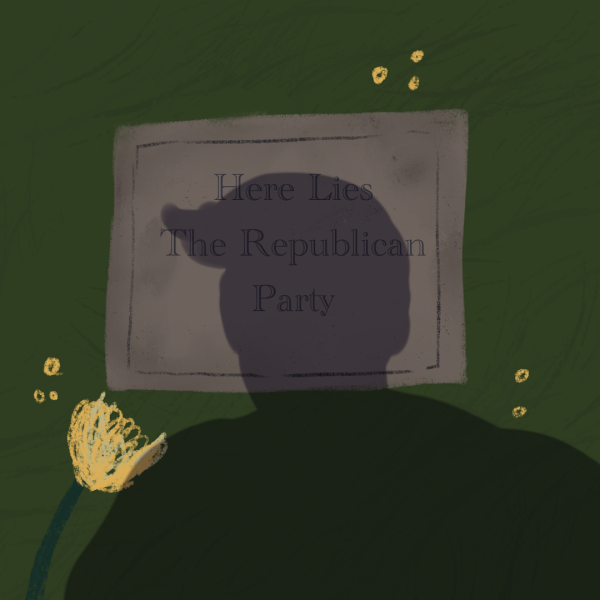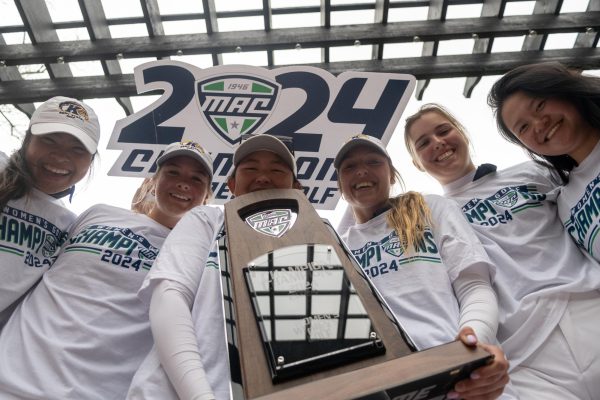Architectural abracadabra
April 25, 2006
Five students work on liquid crystal bridge, design layouts
Architecture students are breaking new grounds by using liquid crystals in their Design and Build Erie project. ALLIEY BENDER | DAILY KENT STATER
Credit: Carl Schierhorn
Building an invisible bridge might have been something to laugh at before five Kent State architecture students got together and decided to turn the idea into reality.
The members of the Kent State chapter of the American Institute of Architecture Students are discovering new design tactics as they continue to research opportunities that liquid crystals offer their Design and Build Erie project.
AIAS is collaborating with the University of Buffalo to address the social needs of Erie, Pa., by designing a pedestrian bridge that will cross the Erie Bayfront Highway.
A fresh student perspective was introduced to the design when second-year architecture major Trevor Williams proposed the idea of using liquid crystals in the bridge’s construction.
Liquid crystals possess unique optical properties that would cause the pedestrian bridge to change colors as the temperature and angle of light changes.
“At night, the bridge will be nearly transparent,” fourth-year architecture major Jeremy Smith said. “If you look down, you will almost feel like you’re floating. The possibilities for visual payoff are endless.”
Those architectural possibilities that liquid crystals lend have only recently been considered.
“Liquid crystals are not widely used in architecture today, but they do have architectural uses,” said Peter Palffy-Muhoray, associate director of the LCI and chief scientific officer at Alpha Micron, the liquid crystal research initiative in Kent.
Palffy-Muhoray praised the students for thinking “outside of the box.”
“This is a pretty novel idea of the students,” he said. “There is great architectural potential, and this is an exciting step in exploring the possibility.”
Originally, the team’s client, the Erie-Western Port Authority, which controls the bay area, wanted three pedestrian bridges constructed. Instead, the design team chose to focus their efforts on one bridge and several accompanying projects.
Smith said he hopes the single bridge will help establish a long-term relationship between Kent State and Erie so future collaborations can take place. Doug Pomorski, harbor master of the Port Authority, agreed.
“I think it is a good opportunity for Jeremy (Smith) and the team to take a look at something that may affect the future of Erie’s waterfront,” Pomorski said. “And it also gives the Port Authority the opportunity to look at potential projects we could work on with Kent State in the future.”
In addition to the bridge, the project will include an outdoor ice skating rink, an ice sculpture space, several flexible picnic areas, an open-air market, a fishing pier and a lighthouse/coffee shop.
“It’s going to be something that’s going to blow people’s minds,” Smith said.
Because fund allocation for the project was recently delayed, development is progressing slower than expected, Smith said.
“It actually works out because it gives us time to refine the liquid crystal use,” he said. “You have to be patient and work with intricate details. We’re going to take our time and do it right.”
Smith said the model of the bridge will be completed by the end of the semester, and the project should be completed within one or two years.
Members of the team include Smith, Williams, Tom Kapfer, Ian Morrison and Kalina Toffolo.
Contact College of Architecture and Environmental Design and School of Art reporter Shauna Stottsberry at [email protected].






















